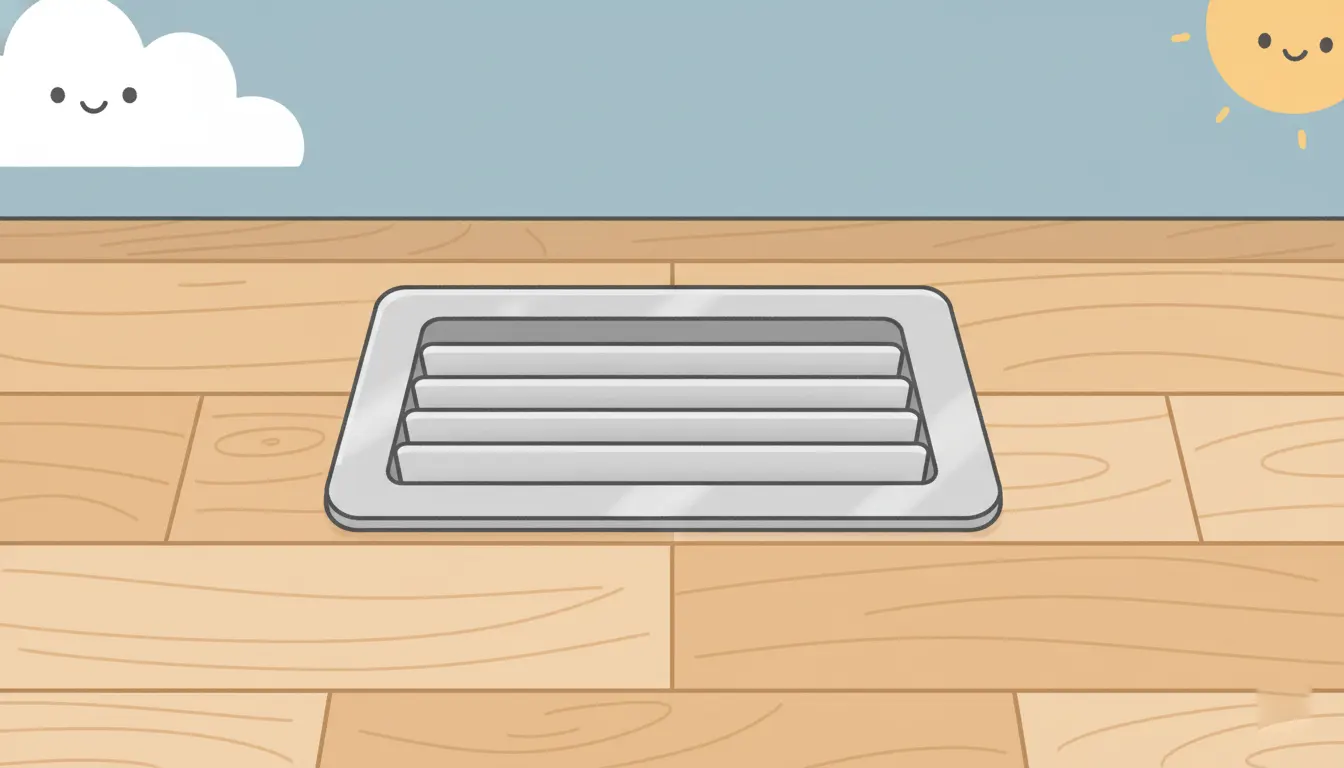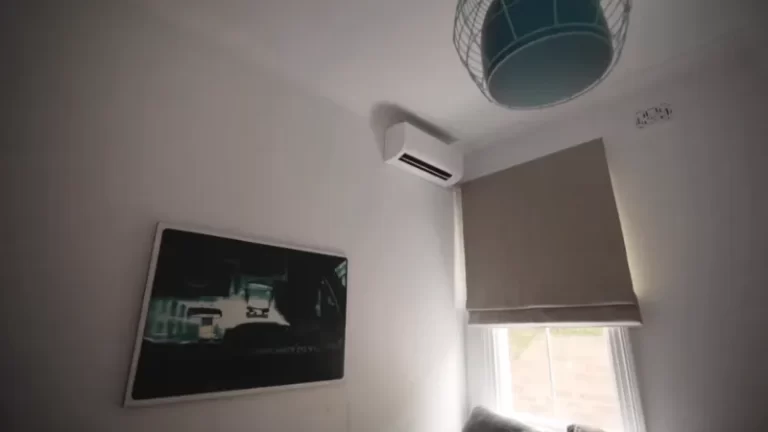Floor Vents Uncovered: Where They Really Go & What You Must Know
You walk over them every day, those unassuming metal grates in your floor. But have you ever stopped to wonder, where do floor vents lead to? They are far more than simple openings; they are the critical endpoints of your home’s hidden circulatory system.
Understanding this network is not just for curious homeowners. It’s essential for managing your home’s energy efficiency, air quality, and even the structural integrity of your floors. Ignoring them can lead to sky-high energy bills, poor air quality, and unnecessary strain on your expensive HVAC equipment.
You'll Learn About
The Secret World Beneath Your Feet: Your Home’s Ductwork System
Floor vents are the visible part of your home’s forced-air heating, ventilation, and air conditioning (HVAC) system. Beneath your flooring lies an extensive network of tubes and channels called ductwork, which acts like arteries and veins, transporting air throughout your entire house.
This system is designed to create a continuous loop, pulling air out of your rooms, conditioning it, and pushing it back in. To achieve this, your floor vents serve two very different, but equally important, purposes. They are either supply vents or return vents.
Supply Vents: Delivering Comfort to Your Rooms
Supply vents are the delivery drivers of your HVAC system. Their sole purpose is to deliver conditioned air—either heated or cooled—into a room. When your furnace or air conditioner is running, you can feel a gentle stream of air blowing out of them.
These vents are connected via the supply ducts directly to your central air handler or furnace. The air is pushed by a powerful blower motor through this network, ending its journey by entering your living space through these floor vents. You’ll typically find them located near windows or along exterior walls to counteract heat loss in winter and heat gain in summer.
Return Vents: The Lungs of Your HVAC System
If supply vents are for delivery, return vents are for pickup. Often larger than supply vents and typically without adjustable louvers (dampers), return vents suck air out of the room and send it back to the HVAC unit. This is a crucial step in the air circulation process.
The air pulled into the return vents travels through return ducts back to the central unit. Before the air is re-heated or re-cooled, it passes through your system’s air filter. This means return vents are your first line of defense against circulating dust, dander, and other allergens throughout your home.
The Complete Journey of Air: From Your Room to the Furnace and Back
To truly understand where your floor vents lead, it helps to follow the entire path a particle of air takes. It’s a continuous cycle that keeps your home comfortable and the air breathable.
The process begins at your thermostat. When the room temperature deviates from your set point, it sends a signal to the HVAC unit. The furnace or air conditioner kicks on, and the blower motor starts turning, initiating the circulation.
Air from your rooms is pulled in through the large return air vents. This air travels through the return ductwork, a journey that often takes it through a basement, crawlspace, or attic. Its first major stop is the air filter, which traps contaminants.
After being filtered, the air moves into the main HVAC unit. Here, it’s either passed over a hot heat exchanger (for heating) or a cold evaporator coil (for cooling). Now conditioned to your desired temperature, the air is forcefully pushed by the blower into the supply ductwork.
This conditioned air travels through the network of supply ducts, branching off to different rooms in your house. Finally, it exits through the supply vents in your floor, re-entering the living space and completing the cycle. This entire process repeats until the thermostat is satisfied.

Common Problems & Dangerous Misconceptions About Floor Vents
Because the ductwork system is mostly hidden, it’s easy to misunderstand its function. These misconceptions can lead to inefficient operation, poor air quality, and even catastrophic damage to your HVAC system.
Myth: “Closing Vents in Unused Rooms Saves Energy”
This is one of the most common and damaging myths in home maintenance. The logic seems simple: why heat or cool a room you’re not using? However, your HVAC system was designed and balanced to handle the specific air volume of your entire home.
When you close supply vents, you increase the air pressure in the ductwork. This backpressure forces the blower motor to work harder, using more energy, not less. It can also amplify small leaks in your ducts, forcing conditioned air into your walls, attic, or crawlspace, which is a massive waste of energy and can lead to moisture problems.
The Critical Danger of Blocking Return Vents
While blocking a supply vent is inefficient, blocking a return air vent is downright dangerous for your HVAC system. A return vent is the “intake” for your system; it needs to breathe. Placing a large piece of furniture, a rug, or any other obstruction over it is like trying to run a marathon while breathing through a straw.
When you starve the system of return air, the furnace can get too hot, potentially tripping a safety limit switch or, in extreme cases, cracking the heat exchanger. In cooling mode, the lack of warm air passing over the evaporator coil can cause it to freeze into a solid block of ice, stopping all cooling and potentially damaging the compressor.
Why Is There No Air Coming Out of My Vent?
Feeling no airflow from a supply vent can be alarming, but it often has a simple solution. Before calling a professional, run through a quick diagnostic check to identify the potential cause. A systematic approach can save you time and money.
Start with the simplest checks at the vent itself and work your way back toward the central unit. Many “no airflow” issues are caused by simple blockages or closed dampers that are easily fixed by the homeowner.
| Symptom | Possible Cause | Solution |
|---|---|---|
| No Airflow From One Vent | The damper on the vent is closed. | Locate the small lever on the vent cover and move it to the open position. |
| An in-line duct damper is closed. | Check the duct run in the basement/crawlspace for a manual damper handle and open it. | |
| The duct is crushed or disconnected. | Visually inspect the ductwork leading to the vent for any obvious damage or disconnection. | |
| Low Airflow From All Vents | The system’s air filter is clogged. | This is the most common cause. Replace your furnace/air handler filter immediately. |
| The evaporator coil is dirty or frozen. | Turn the AC off but leave the fan on to thaw the coil. If it refreezes, call an HVAC technician. | |
| Strange Noises From Vents | An object has fallen into the ductwork. | Remove the vent cover and use a flashlight and grabbing tool to remove the obstruction. |
| Ductwork is loose or improperly sized. | Listen for whistling or booming sounds when the system turns on/off. This may require a professional diagnosis. |
The Unseen Impact: How Floor Vents Affect Your Home’s Health
The ductwork connected to your floor vents doesn’t just impact your comfort and energy bills; it has a profound effect on the overall health of your home environment. What happens inside those hidden channels directly translates to the air you breathe and the condition of your home.
A Highway for Allergens and Pollutants
Over time, ductwork can accumulate a shocking amount of dust, pet dander, pollen, and other debris. Every time your HVAC system kicks on, it can dislodge some of these particles and blast them into your living space through the supply vents, negatively impacting indoor air quality.
This is especially concerning for individuals with allergies, asthma, or other respiratory conditions. A clean and well-sealed duct system is foundational to a healthy indoor environment.
The Connection Between Ducts and Moisture
Your ductwork’s location, often in unconditioned basements or crawlspaces, makes it susceptible to moisture issues. If there are leaks in the ductwork, it can draw in damp, musty air and distribute it throughout your home. This can lead to widespread mold and mildew problems that are difficult to trace.
If you ever notice signs of moisture damage near your vents, such as discoloration on the flooring, it’s a serious red flag. In some cases, you might even see **water coming through floorboards**, which could be linked to a condensation issue or leak associated with your nearby ductwork. This moisture can ruin flooring, requiring significant repairs or even refinishing. Before attempting any repairs on damaged hardwood, it’s wise to understand what products are safe, which is why knowing if **you can use Restor-A-Finish on wood floors** is valuable information.
Proactive Maintenance for Your Vents and Ductwork: A Homeowner’s Guide
Maintaining the system your floor vents are connected to is one of the highest-return investments you can make in your home. Simple, regular maintenance can prevent costly repairs, improve air quality, and lower your energy bills significantly.
Simple Steps for Every Homeowner
The most important task is to check and change your HVAC air filter regularly. A clogged filter is the root cause of countless system failures and efficiency problems. Set a recurring reminder to check it monthly and replace it at least every three months.
You should also regularly clean the vent covers themselves. Use a vacuum with a brush attachment to remove dust and debris from the grilles. This prevents that collected dust from being blown into the room the next time the system turns on.
When to Call for Professional Help
While DIY maintenance is crucial, some tasks are best left to professionals. Consider a professional duct cleaning if you’ve recently completed a major renovation, have persistent allergy issues, or can see visible mold or pest infestations in your ductwork.
An HVAC technician can also perform a system check-up to ensure everything is running correctly. They can test for duct leakage, check refrigerant levels, and clean essential components like the blower motor and coils, ensuring your entire system runs at peak performance.
Your Vents, Your Home’s Lifeline: A Final Word
So, where do floor vents lead? They lead directly to the heart of your home: the HVAC system that provides comfort and circulates the air you breathe. They are not passive holes in the floor but active gateways in a dynamic and vital network.
By understanding their function as either supply or return vents and respecting the importance of unobstructed airflow, you take a massive step toward becoming a smarter, more effective homeowner. Proper maintenance and awareness of this hidden system will pay dividends in comfort, savings, and peace of mind for years to come.

